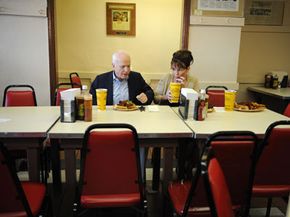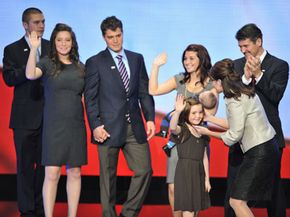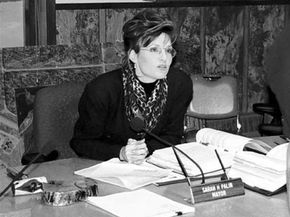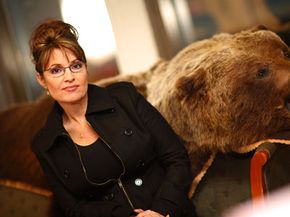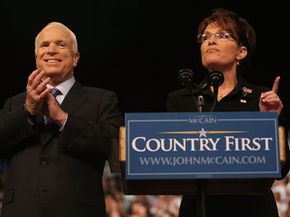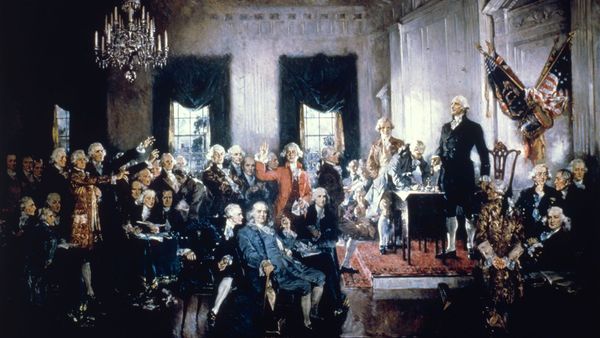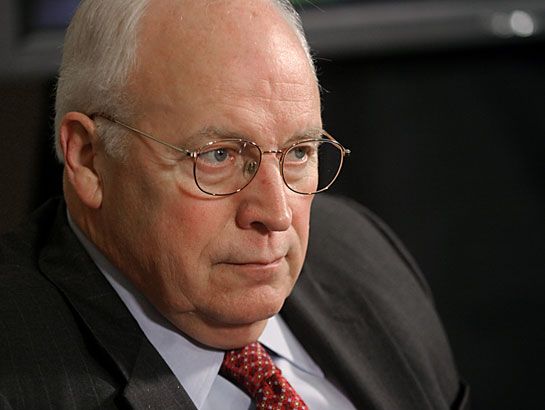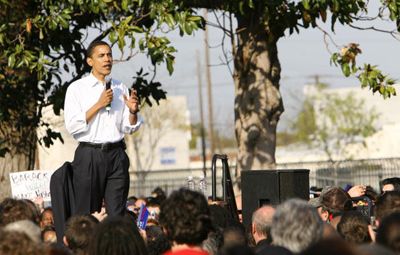On Aug. 29, 2008, the 20th anniversary of her marriage, Sarah Palin gave the most important speech of her life. Before a television viewing audience of 37.2 million people (one million shy of the record audience Barack Obama's acceptance speech drew a week earlier), Palin accepted the nomination as the first female Republican vice-presidential candidate [source: New York Times]. Palin told McCain after he introduced her: "I will be honored to serve next to the next president of the United States" [source: Palin].
Palin became an overnight superstar after John McCain announced he'd chosen her as his running mate. Political writers were surprised by the breadth and staying power of the sensation her nomination garnered. A Pew Research survey found that for the week of Sept. 1 to 7, 2008, Gov. Palin topped the news cycle, edging out Democratic nominee Barack Obama and even her running mate [source: Politico].
She lent a surge to McCain's campaign, which had been trailing Obama's. In the weeks following his vice president selection, McCain jumped 12 percent among white women registered voters [source: Washington Post]. This surge took away a sector that had largely supported Obama and helped McCain narrow the overall lead between McCain and Obama in polls.
This popularity remained in the face of personal and political revelations about Palin. Almost as soon as she accepted McCain's invitation to run as vice president, news of scandals emerged in the media. Despite the bad press, Palin has displayed an uncanny ability to weather scandals of both a personal and professional nature.
Palin announced that Bristol was five months pregnant at the time of the nomination. "She has our unconditional love and support," the Palins said in a press release [source: Chicago Tribune]. The statement also mentioned that Bristol would marry the father, 18-year-old Levi Johnston. Despite requests for privacy from the Palins, Johnston was brought into media focus when excerpts from his MySpace page were published [source: New York Post].
Stories about Todd Palin's past emerged as well. The "First Dude" was a member of the Alaskan Independence Party (AIP) from 1995 to 2002 [source: Boston Globe]. The AIP wants Alaskans to have a vote on secession from the United States [source: AIP]. Todd Palin also was charged with drunk driving in 1986, at age 22 [source: CBN].
Palin's professionalism came under a cloud when news of the "Troopergate" story spread. As governor, Palin and her husband stood accused of pressuring the state public safety commissioner to fire state trooper Mike Wooten, Palin's former brother-in-law, who was involved in a divorce with Palin's sister at the time. The Palins filed reports against Wooten, alleging he'd been abusive to his stepson and had violated state laws. The commissioner refused to fire Wooten and was himself later fired by Palin. The governor has said she released the commissioner over budget problems [source: WSJ]. The allegations were enough to launch an investigation by the state legislature, prompting Palin to hire a private attorney. Making matters worse, the man she chose to replace the fired commissioner left the position two weeks later after a 2005 sexual harassment complaint surfaced [source: USA Today].
With reports of scandals flooding the news cycle after her nomination, McCain campaign managers kept Palin away from the media. Some journalists complained that Palin was delivering the same speech at each campaign stop and offering nothing new. However, the crowds of voters she drew admired her. At campaign rallies, "Mr. McCain's crowds have mushroomed from hundreds to happily bellowing thousands" [source: New York Times]. She also drew donors: McCain's campaign attracted $7 million the day after he announced Palin as his choice for vice president [source: AFP].
A Sept. 5 to 7 poll shows 53 percent of Republicans said they were more likely to vote GOP because Palin was on the ticket; Vice President Dick Cheney managed to garner 20 percent of respondents in 2000 [source: USA Today]. And Palin's shown tremendous staying power in the media spotlight. "[I]t is very unusual, if not unprecedented, for a vice presidential pick to dominate a campaign in the sustained manner Palin has," wrote one observer [source: Politico].
This, what came to be referred as the Palin effect, lost some momentum as the campaign wore on. By mid-October, Palin’s favorability in polls decreased. One New York Times/CBS poll found that she elicited a 40 percent unfavorable response among voters, with 32 percent responding favorably. This was almost a complete flip-flop in results from a poll taken in September [source: Scotsman]. Support for the vice presidential candidate among the GOP remained strong, however. In early October, Sarah Palin drew a crowd of around 20,000 for a solo appearance in Carson, Calif. This appearance came on the heels of her strong showing at the single vice presidential debate, where most observers agreed the governor held her own against veteran senator Joe Biden.
She also took on the traditional vice presidential role of attack dog for the campaign, mentioning that Barack Obama was “palling around with terrorists,” in reference to the Democratic candidate’s past relationship with former Weather Underground member William Ayers [source: AP].
Sarah Palin appears to have learned a significant amount about national politics. If support for her remains through November, she may become the first female vice-president in U.S. history.
